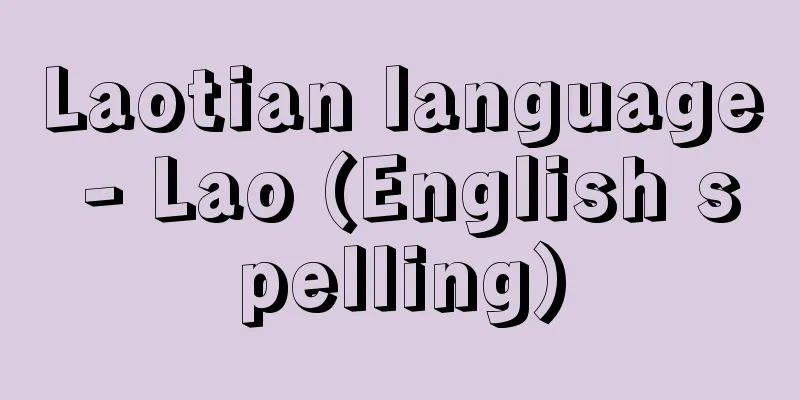Shugo Daimyo - Shugo Daimyo

|
This refers to the power of those appointed as Shugo by the shogunate during the Northern and Southern Courts and Muromachi periods, who gradually became feudal lords within the provinces they were assigned to. They are contrasted with the later Sengoku and early modern daimyo. The original duties and authority of Shugo were the "Three Great Crimes," and they did not have administrative or judicial powers over the entire provinces they were assigned to. However, after the Nanboku-cho period, they were given the power to carry out acts of violence against the fields and to comply with envoys, and so they came to hold the authority to administer land and to adjudicate disputes between jito and kokujin within the provinces they were assigned to, and used this power to turn the jito and kokujin into vassals. Meanwhile, by the early 15th century, the Shugo had acquired the right to collect temporary taxes such as the Ise Shrine yakubutakumumai (rice tax), abdication tax, and accession tax, while absorbing the powers, structures, and territories of the Kokuga by making the Kokuga zaicho officials their vassals and turning the Kokuga territories into Shugo territories. They also gradually brought the Shoen (manors) under their power through the Hanzei (half-tax payment) and Shugouke (request for shugo), but had not yet fully incorporated them. This state of affairs in which Shugo daimyo, who possessed such powerful characteristics, controlled the provinces they were assigned to is known as the Shugo-ryokoku system. Powerful Shugo daimyo were the Akamatsu, Ouchi, Shiba, Hatakeyama, Hosokawa, and Yamana clans, each of whom served as Shugo of several provinces, with the Hosokawa clan ruling over nine provinces and the Yamana clan ruling over eleven. In order to control these Shugo daimyo, the shogunate had Shugo, except for those in Kyushu and the eastern provinces under the jurisdiction of the Kamakura government, entrust the governance of their provinces to Shugodai, who stayed in Kyoto and appointed them as Shogunate officials, and the Shogunate also decided on the heads of each Shugo daimyo family, but at the same time, it had to give the Shugo various powers in their provinces as mentioned above. In this way, the contradictory elements of being regulated by the Shogunate and the Shogun, while also having a desire to strengthen their independence from the Shogunate, are the characteristics of the Shugo daimyo and Shugo domain system. Furthermore, when comparing shugo daimyo with Sengoku daimyo, it can be said that they were inferior to the Sengoku daimyo in the degree of control over land and the people, but this is purely relative, and the decisive difference lies in the nature of their relationship with the shogunate. [Masaki Kubota] [Reference] | | |Source: Shogakukan Encyclopedia Nipponica About Encyclopedia Nipponica Information | Legend |
|
南北朝・室町期に幕府から守護に任命され、任国内でしだいに大名領主化を遂げた権力をいう。後の戦国大名や近世大名と対比される。守護の本来の任務権限は「大犯(だいぼん)三箇条」で、任国内全体の行政・裁判権などは有していなかった。しかし南北朝期以降には、刈田狼藉(かりたろうぜき)や使節遵行(しせつじゅんぎょう)の権が与えられたため、任国内の地頭(じとう)や国人(こくじん)間の紛争にかかわる裁判や土地の管理などの権限を握るようになり、これをもとに地頭や国人の被官化を進めていった。一方、守護は、15世紀初期に至る過程で、伊勢(いせ)神宮役夫工米(やくぶたくむまい)・譲位段銭(たんせん)・即位段銭などの臨時税収取権を獲得するとともに、国衙(こくが)在庁官人を被官化し、国衙領を守護領とするなど、国衙の権能・機構・所領を吸収していった。また、半済(はんぜい)や守護請(うけ)を通じ荘園(しょうえん)をも徐々に自己の権力下に組み込んでいったが、いまだ全面的に組み込むまでには至らなかった。こうした権力的性格を有する守護大名の任国支配の実態は守護領国制とよばれている。有力な守護大名は赤松・大内・斯波(しば)・畠山(はたけやま)・細川・山名氏らで、ともに数か国の守護を兼ねたが、なかでも細川氏は9か国、山名氏は11か国を領していた。こうした守護大名を統御するために、幕府は、九州と鎌倉府管轄下の東国以外の守護には、その任国支配を守護代にゆだねさせて在京させ、幕府の官僚に任じたり、それぞれの守護大名家の惣領(そうりょう)を幕府が決めたりなどしたが、一方では守護に対して前述のような任国における諸権限を与えねばならなかったのである。このように幕府・将軍に規制されながら、しかし幕府からの独立性を強める志向をもった相矛盾する要素こそが、守護大名および守護領国制の特徴である。なお守護大名を戦国大名と比較した場合、土地や人民支配の貫徹度においては戦国大名に劣るといえるが、それはあくまで相対的なもので、決定的な相違は幕府との関係のあり方に求められるべきである。 [久保田昌希] [参照項目] | | |出典 小学館 日本大百科全書(ニッポニカ)日本大百科全書(ニッポニカ)について 情報 | 凡例 |
<<: Shkodër (English spelling)
Recommend
Interwoven - Kousho
It is an abbreviation for weaving using one or mo...
Time series - jikeiretsu (English spelling) time series
A time series is a sequence of values that are o...
Neman River (English spelling)
A river that flows from Belarus to Lithuania and e...
Mechanical tube length
...Many also have built-in light sources for illu...
Fourth Monthly Order of the People - Shimingetsurei (English spelling) Si-min yue-ling; Ssū-min yüeh-ling
This is an annual record of events in the late Han...
FNS - FNS
...A private television broadcasting company. Hea...
Kinoshita Junan
A Confucian scholar in the early Edo period. Born...
Itowaripu Toshiyori - Itowaripu Toshiyori
…A trade method by the Edo Shogunate that control...
Sadler, MT (English spelling) SadlerMT
…However, Malthus himself seemed to acknowledge t...
Saint-Malo (English spelling)
A port town and seaside resort on the north coast ...
Glass fiber - Glass fiber
Glass, which is mainly composed of silicate, is m...
Advisory body - Simon Kikan
An administrative body that has the authority to ...
Potential energy - ichi-en-erga (English spelling)
It is also called potential energy. When an object...
Aegospotami - Aegospotami
…Aigospotamoi (Aegospotami) means "river of ...
Winning fee - Shosairyo
This is a customs duty on the cargo carried by a s...









